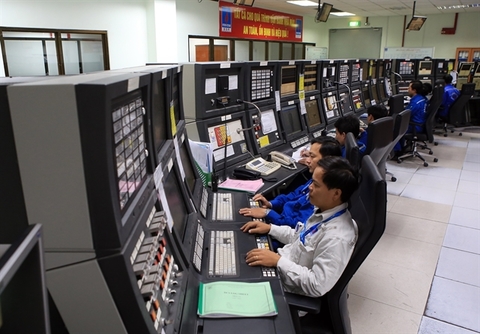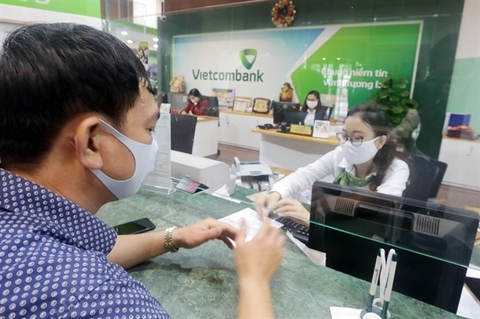Vietnam to lower lending interests via cash influx
Vietnam to lower lending interests via cash influx
The central bank is set to issue VND3 trillion ($131.65 million) to banks so that they could lower their interest of VND100 trillion worth of loans to boost economic recovery.
An employee counts Vietnamese banknotes at a bank in Hanoi. Photo by VnExpress/Giang Huy |
The is a mechanism the State Bank of Vietnam (SBV) is considering to make up for the loss in bank income from lowering their loan interests to 3-4 percent annually, the SBV’s head of credit for economic sectors Nguyen Tuan Anh said recently.
The current shot-term lending rate for prioritized sectors is 4.5 percent annually.
Economist Le Xuan Nghia said VND3 trillion in support is too little for a strong economic rebound and proposed a bigger one.
The central bank could consider using its foreign exchange reserves, or the Ministry of Finance could issue bonds, to fund the support, he added.
The announcement of the SBV came as the National Assembly suggested the government pumps cash into the economy through lowering loan interests as it did in the 2009-2010 period.
However, Anh said this idea needs to be carefully pondered since after the economic crisis in 2009 and the interest compensation decision, inflation shot up to 18.6 percent in 2011.
Any policy that does not ensure macro stability would have an adverse impact on the economy, he added.
Nguyen Quoc Hung, general secretary of Vietnam Banks Association, said the consequence of bad debts rising from the 2009 crisis remains to this day.
Of the stimulus package of VND145 trillion back then, VND17 trillion was interest compensation mobilized from foreign exchange reserves, he said.
He proposed the state’s coffers be used for interest compensation, with no "prioritized" sectors as all have been affected by the fourth Covid-19 wave.
Banks' recent interest rate reductions have pulled profits down VND26 trillion compared to those projected prior to the rate cut.
























